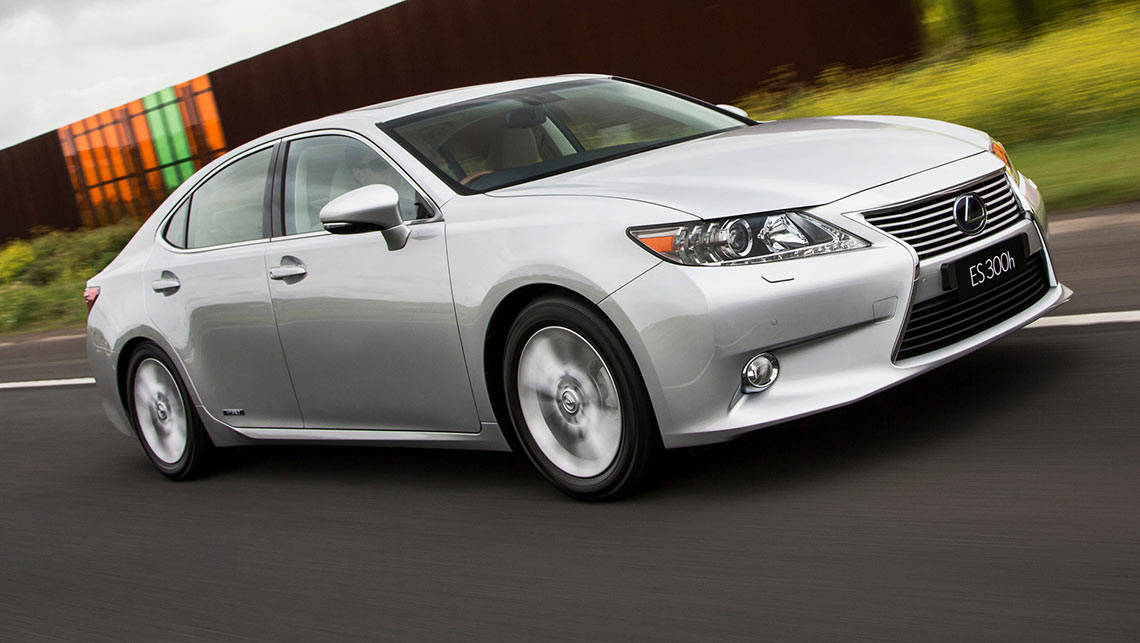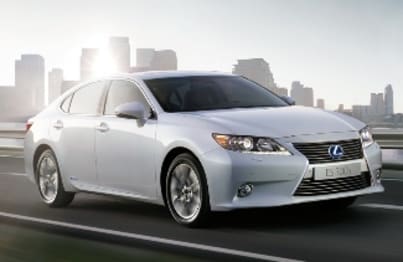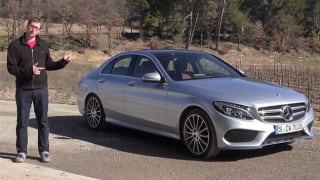Save the planet, save your wallet or just savour a smug glance sideways in traffic... hybrid cars do this to people. Yes, you can question the validity of a car with a petrol engine and an electric motor. Question also the reason for hauling around 60kg of batteries that expire after 2km, the under-bonnet complexity, the premium price and the disappointing resale value.
But it's hard to find fault with its frugal fuel consumption and eerie quietness. The dogged devotion of Toyota to the hybrid concept - once regarded as a toy pursued by technophiles or tree-huggers - has led to more than six million global sales and gone upstream to Lexus, to the extent that hybrids make up half the luxury brand's line-up.
Value
Fuel economy may not be part of the purchase criteria in a brand with the average price of $98,700. Then again, the ES300h in Sports Luxury trim costs about $2000 less than the almost identical, petrol only ES350 yet will save its owner about $1000 a year in fuel.
Design
Explore the 2014 Lexus ES range
The ES300h and its petrol-only sibling, the ES350, are related to the Toyota Camry Hybrid and Toyota Aurion. But it's far too easy to consider the ES300h as just a tarted-up Camry Hybrid. There are considerable differences - even the platforms aren't shared - which result in a very different car to drive.
Economics and engineering apart, my co-driver reckons the car is one of the best she's ever driven, citing its quietness, seat comfort, the heated seats and the clarity of the audio. The bamboo cabin trim - its choice as a renewable wood in harmony with Lexus's green-tinged message - is elegant, its subtle orange contrasting with the predominantly black leather upholstery.
There is a solid feel to its fittings, a reassuringly thump as the doors close, a theatre of instrument needles and cabin lights when the ignition button is depressed.
The boot, marginally smaller than the petrol model's at 425L, is more than enough for golf bags and weekend luggage. There's no fold-down rear seat, just a ski hatch for long, slim objects. In design terms it might be dismissed as a relatively indistinctive contrast - contemporary silhouette, extrovert grille - yet it has broad audience appeal.
It may appeal to a slightly older buyer than its Lexus siblings. The doors open wide, the seats are more like those in a lounge than a cockpit and there are window blinds on the rear doors and screen.
Driving
It is also utterly silent whether cruising highways or negotiating shopping-centre parking areas. For music lovers, this quietness enhances the purity of the Mark Levinson audio and its 15 speakers.
One electric motor is used almost exclusively for reversing and for initial acceleration. The other one is more for charging the batteries - mounted under the boot floor, these drain quickly and prompt the four-cylinder engine to automatically start, also becoming a power source for the generator.
Ask for more power and the electric motor and the 2.5-litre engine work together. Given its 1.7 tonnes and the relatively modest outputs, the Lexus is surprisingly quick off the mark. This car can effortlessly tour around Australia yet there's no doubt it is made for the suburbs.
It almost revels in congestion and crawling traffic where the engine is rarely switched on. It glides through car parks. Low-speed residential streets indulge its electric whims. It's a sublime cruiser, the electric motors are almost redundant in the country and on freeways where the petrol engine gives much-needed high(er) speed cruising and snappy overtaking performance.
The equipment level is on a different plane to the Camry and Aurion counterparts. It is superior in the feel of the car, the sense of how it's built and the way everything operates, from the dash controls to the powered bootlid.
There's the badge, of course. It's a tough road for any luxury car, especially one with only 25 years in Australia. Even backed by Toyota, Lexus ranks fourth in our premium market, its sales tally less than half of Audi's. But now with 18 models in showrooms, Lexus sales are on the up. It has a 6 per cent growth to June this year in a market that fell by 11 per cent.
You can bank on more than just its quality, long warranty and customer service (which extends to home or office pick-ups when servicing). Its improving sales may reflect finally on the acceptability of hybrids.













